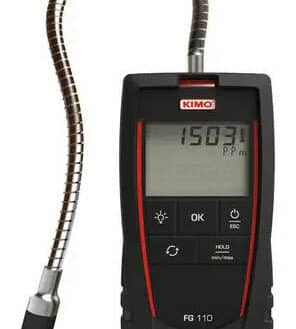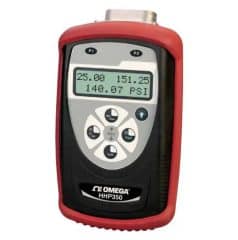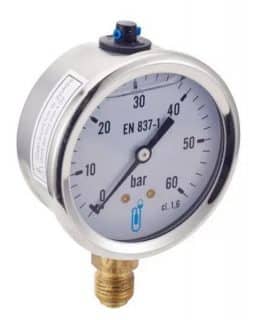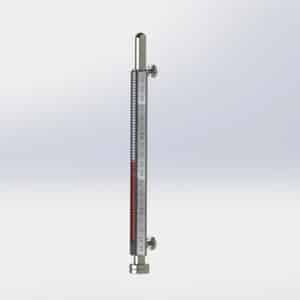
LANSO Bourdon tube pressure gauge
Inside a pressure gauge, there are find different types of measuring devices whose ability to deform in a certain way under the effect of pressure is used.
Bourdon tube pressure gauges: this type of pressure gauge is a curved tube with an oval profile. The pressure of the fluid to be measured acts inside the tube and the tube straightens out when the pressure increases. A mechanism amplifies the movements of the tube and transforms them into a rotary motion for the needle.
Bourdon tube pressure gauges are used for pressures from 0.6 to 4,000 bar, they are sensitive to overpressure. For aggressive media, the material of the Bourdon tube must be adapted.
Diaphragm pressure gauges: the pressure of the fluid is applied to one side of a thin corrugated diaphragm. A mechanism transforms the deformation of the diaphragm into a rotary motion for the needle.
Diaphragm pressure gauges measure pressures from 16 mbar to 40 bar and can tolerate very high overpressure. The diaphragm is easier to protect from aggressive fluids, a protective coating or an intermediate film can be applied to it.
Capsule pressure gauges: the capsule is made of two diaphragms assembled on their circumference to form a tight cavity. The pressure of the fluid is applied inside the capsule which expands according to the pressure variations. A mechanism transforms the deformation of the capsule into a rotary motion for the needle.
Capsule pressure gauges are used for low pressures from 2.5 to 600 mbar and have limited overpressure resistance.
Bellows pressure gauges The pressure of the fluid is applied inside a bellows (a thin-walled ringed cylinder). A mechanism transforms the changes in length of the bellows into rotation for the needle.
Bellows pressure gauges are used for low pressures from 60 to 1,000 mbar.









